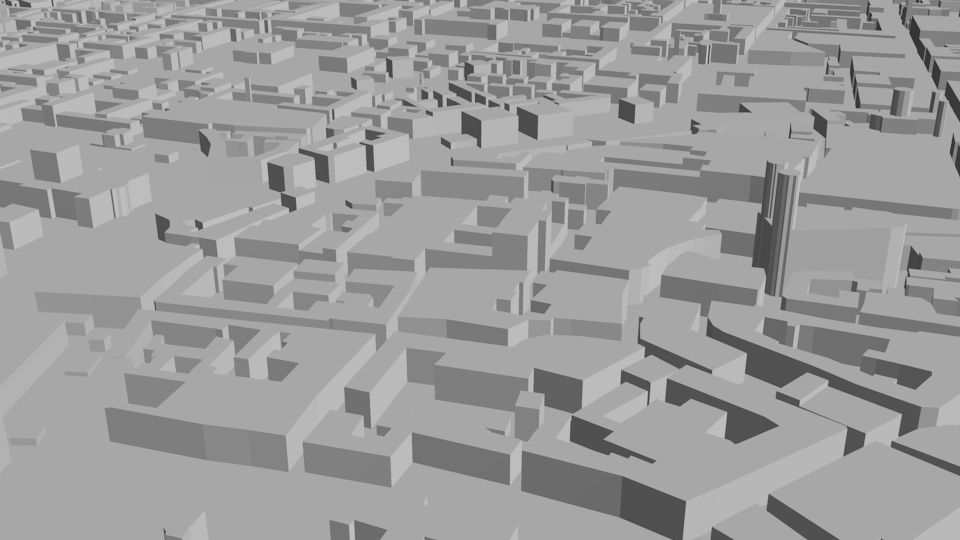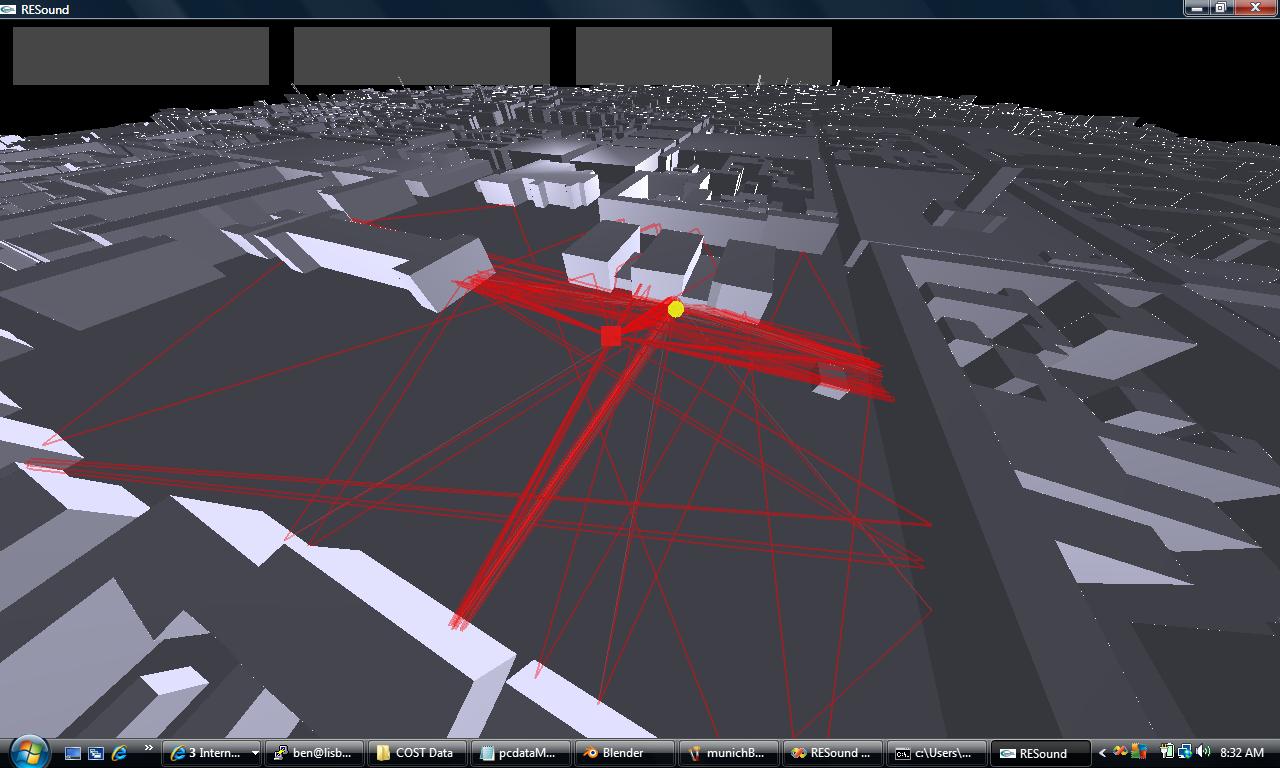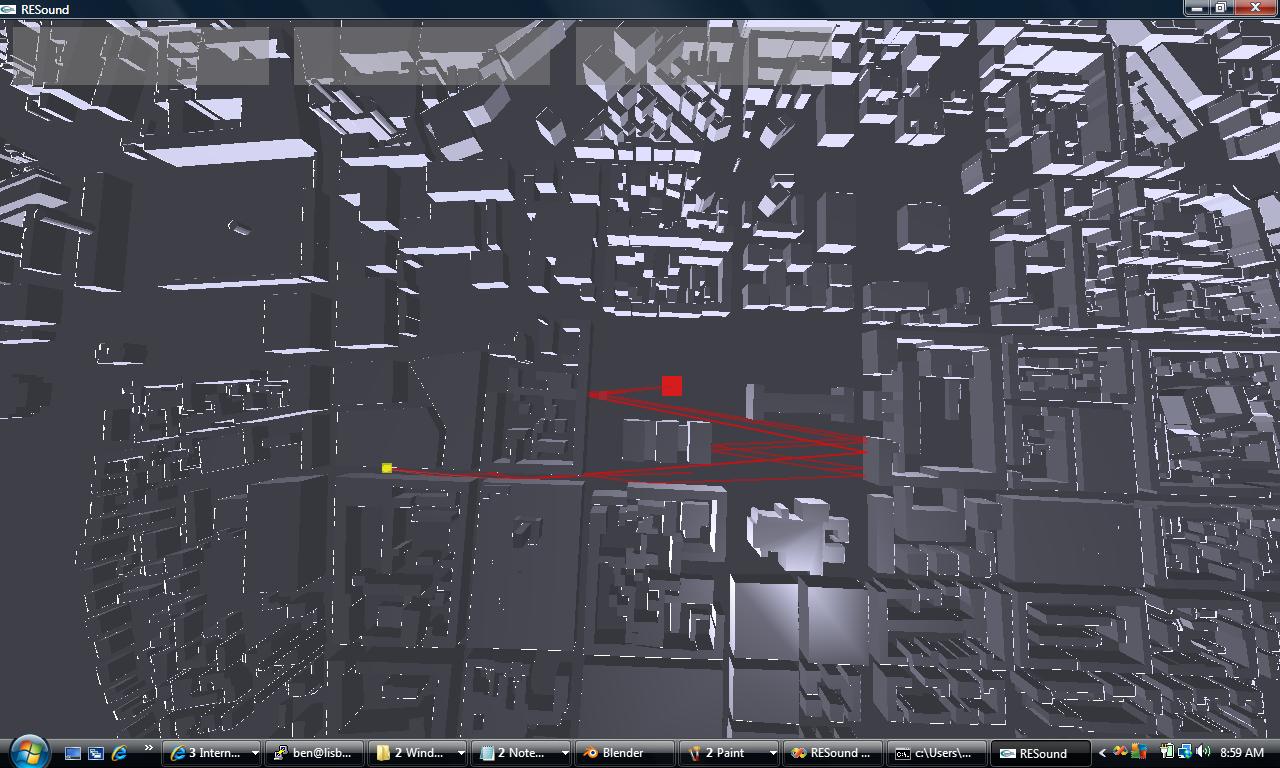10/31/2011
I have made some good progress towards simulating the propagation of
radio waves in urban environments. Here are some of the
highlights:
Model Acquisition and
Conversion
I acquired some RF propagation measurement data collected in Munich
Germany, including: a building database, collection routes, and signal
strength measurement values along the routes. The building
database was not in a standard format, and so I had to write some
custom code to convert the data into a standard .obj file format.
Below is a rendered image of the resulting building data.
Note the cathedral on the right-hand side of the image.
All of the buildings are just extrusions to a certain height
for a given polygon footprint. I am ignoring ground elevation
changes initially, and assuming the ground is a flat plane.
Later I hope to incorporate terrain for better results.



